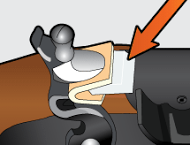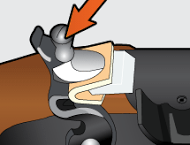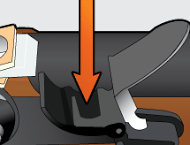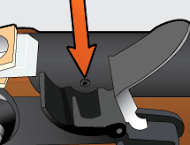Newfoundland and Labrador Hunter Education Program
TIME REMAINING:
Flintlock Muzzleloader

This style of muzzleloader dates back to the 17th century and features a flintlock mechanism that produces sparks when a piece of flint strikes its steel frizzen. The firing mechanism consists of the following parts:
Flint

A hard, fine-grained form of quartz stone mounted in the hammer that creates a shower of sparks when it strikes the steel frizzen.
Hammer

Part of the firing mechanism that holds the flint.
Frizzen

A piece of steel that is struck by the flint to create sparks. The frizzen also covers the priming charge in the Flash Pan.
Flash Pan

A small groove cut in the firing mechanism to hold the priming charge. While filling the flash pan with priming powder, tilt the gun slightly so that the powder enters the touch hole. Once the Flash Pan is full, close the Frizzen tightly.
Touch Hole

Located at the side of the barrel at the edge of the Flash Pan.
Safety First! If your muzzleloader has a wooden ramrod, the ramrod can shatter under pressure, causing injury. Always exercise caution when using a wooden ramrod, and avoid using one that shows any sign of damage.